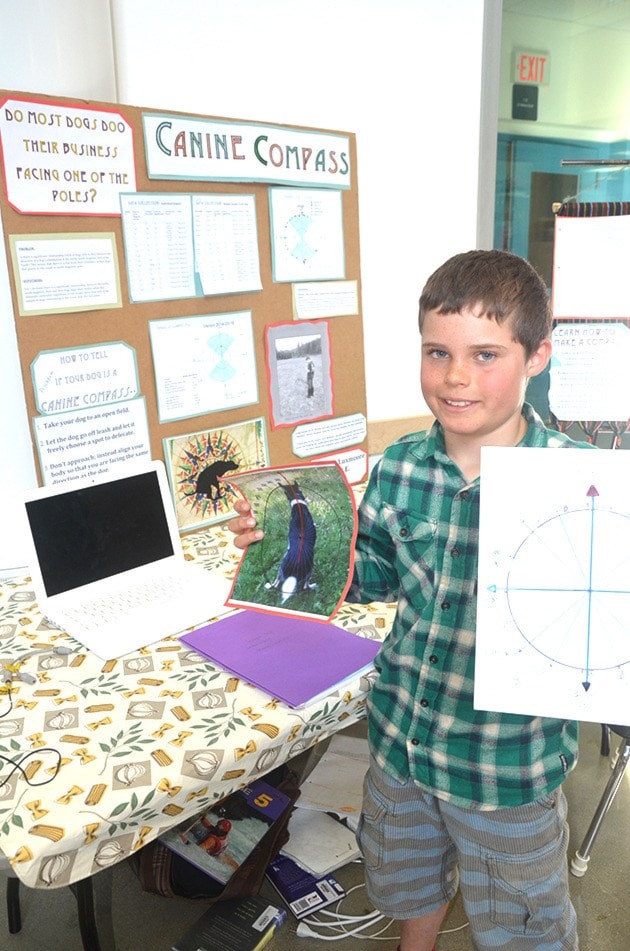PHOTO BELOW: 1. When the budget barbarians come knocking on the laboratory door with cuts in mind, they often target basic scientific research instead of applied science, arguing the latter will have a near-term payoff. But scientists argue that basic science is responsible for the basis of transformative technologies. For example, if online complaining is your measurement tool, the biggest crises Revelstoke faces each spring is post-melt dog doo on the greenbelt trail. Although grade 5 student Nelson Luxmoore doesn’t have the answer, his meticulous basic research could one day be part of a solution to our dog excrement crisis. Nelson followed dogs around with a clipboard as they did their business, and found that dogs often face either one of the poles when they “eliminate.” His research confirmed earlier observations, and displayed good scientific organization. One day, his research could lead to a solution to the greenbelt poop issue. Nelson also gained real-life science skills; as local biologists will tell you, a big part of the job is following animals around and analyzing their scat. 2. Carlos Serrouya’s (in checked shirt) experiment studied pain tolerance. Could kids keep their hand in ice water longer when they were playing video games? The answer is yes. He concluded it could have applications for pain management, amongst other things.
(continues below)

3. Teacher Laurie Henshaw organized the science fair for her grade 5 class. She recruited several Revelstoke-based scientists to officiate at the April 10 fair, which featured lots of great exhibits. 4. Alex Jay’s experiment measured the effect of penstock height on power generation on a water wheel. 5. Holly Hamilton focused on slime, more specifically investigating the nature of chemical reactions involving monomers. She created slime for the project and also explained the reactions using elastic bands. 6. Jaclyn Elliott studied the effect adding coffee grounds to soil had on mung beans. The effect was pretty dramatic; the plant on the right with the coffee grounds wasn’t doing nearly as well as the control plant on the left. Anyway, Elliott said she couldn’t say scientifically, but it’s probably OK if I keep putting my coffee grounds in the compost because she added a pretty big, concentrated dose to the soil. 7. In a display of scientific and engineering ability. Magnus Nielsen converted his bike into a generator that powered the light bulb display behind him. – Words and photos by Aaron Orlando/Revelstoke Times Review
